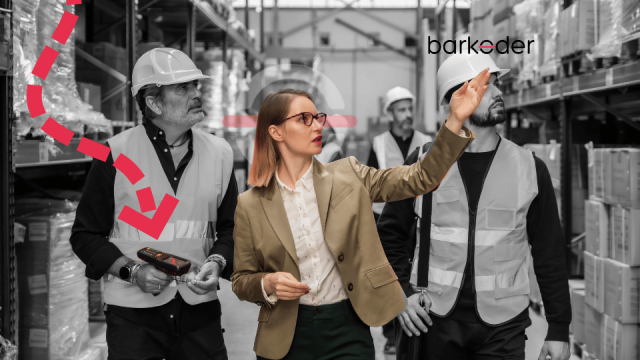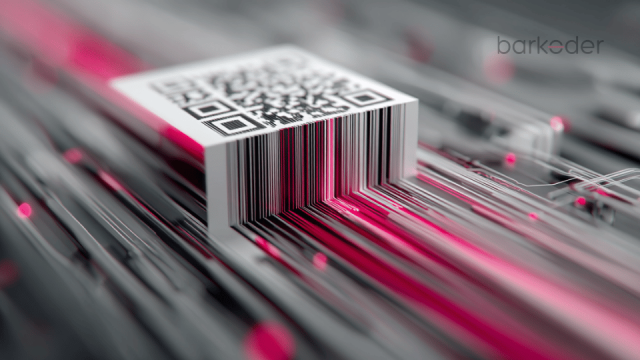
Augmented Reality Is the Future of Inventory—Here’s Why
Inventory management has come a long way from clipboards and spreadsheets. What was once a slow, manual, and error-prone process has evolved into a dynamic, data-driven operation. In today’s fast-paced supply chain environment, staying ahead means embracing innovation—and Augmented Reality (AR) is one of the most exciting tools leading this transformation.
With AR, warehouse teams can visualize data over the physical world in real time, improve picking accuracy, reduce training time, and dramatically boost operational efficiency. It bridges the gap between digital systems and physical logistics, creating smarter workflows and empowering teams to work with greater precision and speed. Whether it’s guiding new employees through tasks or providing live inventory counts at a glance, AR is reshaping how we interact with stock, space, and supply chains.
In this blog, we’ll explore 10 powerful ways AR is making inventory management not only easier—but smarter than ever before.
1. Real-Time Inventory Visualization
AR headsets or smart glasses can overlay real-time stock data directly onto physical shelves, turning a regular warehouse into an interactive workspace. Workers wearing these devices can walk through aisles and see digital information—such as product names, quantities, expiration dates, or reorder alerts—layered over the actual location of items.
This eliminates the need to manually scan barcodes or flip through printed lists. Instead, employees get instant, visual insights that help them quickly spot low stock levels, misplaced items, or inventory discrepancies. The result? Faster decision-making, fewer errors, and significantly improved productivity on the warehouse floor.
AR visualization also helps reduce cognitive load. Instead of remembering SKUs or searching through databases, workers simply follow on-screen cues—making complex inventory tasks more intuitive and efficient, especially in high-volume or time-sensitive environments.
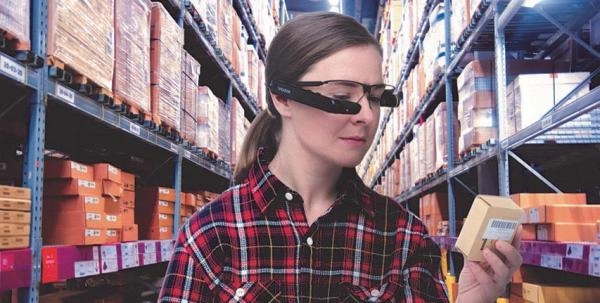
2. Faster Picking & Sorting
AR provides on-screen navigation to guide workers to the exact item’s location in the warehouse, acting like a GPS for indoor logistics. Through smart glasses or AR-enabled devices, workers see digital arrows, highlighted shelves, or step-by-step directions overlaid on their physical surroundings. This means no more wandering the aisles, second-guessing bin numbers, or flipping through pick lists.
The result is dramatically reduced picking errors and faster fulfillment. Workers can complete tasks with confidence, knowing they’re retrieving the correct items from the right locations. This is especially valuable in large or multi-level warehouses, where manually locating stock can be time-consuming and frustrating.
In high-volume or just-in-time environments, even small delays can add up. AR helps eliminate bottlenecks by streamlining movement and decision-making. It also enables new staff to become productive faster, since they don’t need to memorize layouts or rely heavily on supervisors for direction. Ultimately, AR turns every picker into a high performer, improving overall throughput and accuracy.
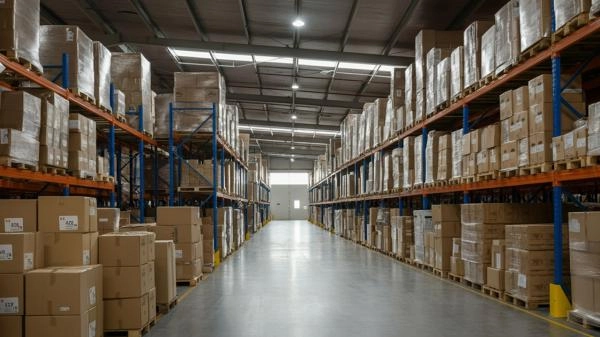
3. Guided Navigation in Warehouses
No more getting lost in massive storage spaces—AR directs users with arrows or path overlays to the right aisle or bin, just like turn-by-turn navigation in a car. This visual guidance appears directly within a worker’s field of view through AR glasses or handheld devices, making it easy to follow the most efficient route through the warehouse.
This feature is especially useful in large facilities with complex layouts or frequently shifting inventory zones. Instead of relying on printed maps, verbal instructions, or trial and error, employees can simply follow intuitive visual cues to reach their destination quickly and confidently.
By cutting down on unnecessary walking and searching, AR reduces travel time significantly, which has a direct impact on productivity and order cycle time. It also minimizes worker fatigue and helps keep operations flowing smoothly during peak periods or staff shortages.
Even temporary or seasonal workers can perform like experienced staff, since AR navigation removes the learning curve of memorizing the warehouse layout. This means faster onboarding, less supervision, and fewer costly mistakes in fast-paced environments.
4. Hands-Free Scanning
With AR smart glasses, workers can scan barcodes simply by looking at them—thanks to built-in cameras and real-time object recognition. This hands-free functionality means employees no longer need to carry handheld scanners or mobile devices while navigating shelves or handling products.
By removing the need to stop and manually scan items, AR allows for a smoother, more continuous workflow. Workers can move freely through the warehouse, picking and placing goods without interruption. This not only boosts speed and productivity but also enhances safety, as both hands remain available for lifting or maneuvering heavy or fragile items.
In environments where hygiene is a concern—such as food storage or pharmaceutical warehouses—hands-free scanning also reduces touchpoints, helping maintain cleanliness and compliance. Additionally, AR systems can validate scans instantly, confirming the right item and quantity, and even alerting users if a mismatch is detected.
Ultimately, this capability turns simple eye movement into a powerful tool, combining efficiency, accuracy, and ergonomics in one seamless user experience.
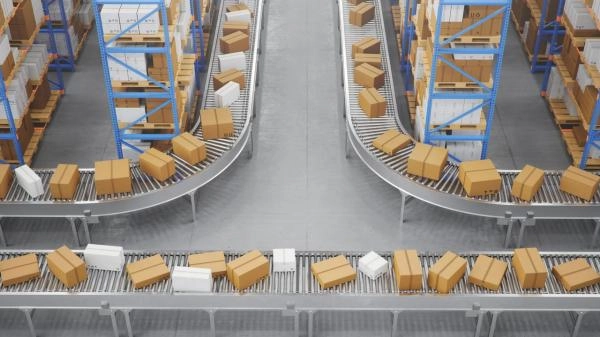
5. Error Reduction in Stock Checks
AR systems highlight mismatched items or labeling errors immediately, giving warehouse workers real-time feedback as they scan or handle products. Using advanced object recognition and data overlays, AR devices can instantly compare what’s physically in front of the user with what’s expected in the system—whether it’s the wrong product, an outdated label, or a misplaced item.
This proactive error detection helps prevent costly mistakes before they ripple through the supply chain. For example, if an employee picks the wrong item for an order, the AR system can flag the error on the spot—reducing the risk of shipping incorrect goods, delaying deliveries, or upsetting customers.
It’s not just about catching errors, though. AR can also show correct label formats, batch numbers, expiration dates, or lot codes, ensuring compliance with industry standards—especially in regulated sectors like pharmaceuticals, food, or aerospace.
By identifying issues in real time rather than after the fact, AR dramatically improves quality control, supports more accurate record-keeping, and reduces the time and cost of rework or returns. In short, it helps organizations maintain a higher standard of operational excellence, every step of the way.
6. Live Data & Analytics Overlays
Supervisors can walk the warehouse with AR tablets or headsets and see live performance data, item turnover rates, or temperature-sensitive product alerts—all layered over the physical environment. This real-time insight allows managers to monitor operations visually, without needing to dig into spreadsheets or back-office dashboards.
With AR, key metrics such as stock levels, picking speed, or zone productivity are displayed contextually—right where they’re needed. For example, a supervisor might look at a shelf and instantly see that a high-turnover item is nearing a restock threshold, or that a specific area is underperforming compared to others. This empowers faster, smarter decision-making on the floor.
AR can also integrate with IoT sensors to show environmental conditions like humidity or temperature for sensitive products. If a cold-storage area rises above a critical threshold, the system can instantly display a warning over that zone, allowing for immediate corrective action.
This kind of data-driven situational awareness helps supervisors stay engaged with frontline operations while making proactive decisions that reduce downtime, prevent waste, and boost overall efficiency. It also improves traceability and accountability, making audits and reporting easier and more transparent.
In essence, AR turns the warehouse into a live dashboard, allowing leaders to manage with eyes wide open.
7. Real-Time System Updates
Every action—from picking to stocking—is updated automatically in the inventory system through AR, eliminating the need for manual data entry or after-the-fact reconciliation. As workers perform tasks using AR headsets or devices, the system captures their actions in real time—whether they’re scanning items, confirming locations, or completing transfers.
This seamless integration ensures that inventory data remains accurate and constantly up to date, which is crucial for operations that rely on precise stock levels, such as just-in-time manufacturing or same-day fulfillment. It also reduces the risk of errors caused by delayed updates, misplaced items, or miscommunication between departments.
In traditional systems, even a small delay between physical movement and digital updates can lead to stockouts, over-ordering, or misrouted shipments. AR solves this by synchronizing physical workflows with digital records instantly, providing a single source of truth that everyone—from floor staff to management—can rely on.
Additionally, real-time updates improve inventory visibility across the supply chain, making it easier to plan replenishments, monitor trends, and respond to issues as they happen. It’s not just automation—it’s smart automationthat brings consistency, speed, and accountability to every step of the process.
8. Faster Training for New Staff
AR offers interactive onboarding, guiding new employees visually through tasks. Instead of relying solely on manuals, verbal instructions, or shadowing experienced workers, new hires wear AR headsets or use AR-enabled devices that display step-by-step instructions directly in their field of view.
This hands-on learning approach lets employees learn by doing, with real-time prompts and visual cues that show exactly what to pick, where to place items, how to operate machinery, or follow safety procedures. It reduces the cognitive load of remembering complex workflows, making it easier for new staff to gain confidence quickly.
Because the guidance is personalized and context-aware, trainees can progress at their own pace without feeling overwhelmed. Errors are minimized as the system can instantly alert them if a step is missed or done incorrectly, providing immediate corrective feedback.
This dramatic reduction in training time means warehouses can onboard more workers faster, respond to seasonal demand spikes effectively, and maintain high operational standards without sacrificing quality. It also reduces the need for constant supervision, freeing up experienced employees to focus on more strategic tasks.
In short, AR transforms onboarding from a passive, time-consuming process into an engaging, efficient experience that empowers new employees from day one.
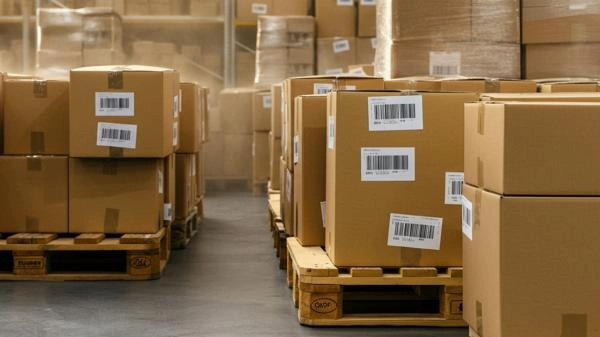
9. Optimized Inventory Placement
AR can recommend optimal shelf placement based on item popularity, weight, or frequency of use—streamlining flow and space usage in the warehouse. By analyzing historical sales data and real-time inventory trends, AR systems can suggest the best locations for products to maximize efficiency.
For example, frequently picked items can be positioned closer to packing or shipping areas, reducing travel time for workers. Heavier or bulkier products can be allocated to lower shelves for safer handling, while fragile or sensitive goods can be placed in controlled environments with easy access.
These intelligent placement recommendations help improve warehouse layout dynamically, adapting to changing demand patterns without requiring costly physical reorganization. Workers can receive AR-guided instructions on where to store new stock or relocate items, ensuring consistent adherence to the optimized plan.
By maximizing space utilization and minimizing unnecessary movement, AR-powered shelf placement enhances productivity, reduces fatigue, and ultimately lowers operational costs—making your warehouse smarter and more agile.
10. Remote Collaboration & Support
Inventory managers can use AR tools to connect with off-site experts, who can “see” what they see and offer help in real time—perfect for troubleshooting and support. Through AR-enabled devices like smart glasses or tablets, remote specialists can view the warehouse environment from the manager’s perspective, guiding them step-by-step to resolve issues quickly.
This live collaboration eliminates the need for expert travel, saving time and costs while ensuring problems are addressed immediately. Whether it’s diagnosing equipment malfunctions, verifying complex inventory processes, or providing technical advice, remote experts can annotate the manager’s view, highlight specific items, or demonstrate corrective actions as if they were physically present.
This technology also supports training and quality control by allowing experienced staff to monitor and assist less experienced workers remotely, boosting confidence and accuracy on the floor. It fosters faster decision-making and reduces downtime, which is critical in high-demand supply chains.
In essence, AR-powered remote collaboration breaks down geographical barriers, bringing expert knowledge directly to where it’s needed most—right inside your warehouse.
Final Thoughts
Augmented Reality is no longer just for games and gadgets—it's a serious business tool changing the way warehouses manage inventory. From real-time visuals to hands-free operations, AR reduces errors, saves time, and boosts team efficiency, transforming traditional warehouses into smart, agile hubs of productivity.
Beyond immediate operational improvements, AR empowers companies to stay competitive in an increasingly demanding market. It enhances employee satisfaction by simplifying complex tasks and reducing physical strain, while also improving customer experience through faster, more accurate order fulfillment.
As the technology becomes more affordable and accessible, we can expect widespread adoption of AR across industries, from retail and manufacturing to logistics and beyond. Early adopters are already reaping the benefits—improved accuracy, cost savings, and greater flexibility in their supply chains.
In the near future, AR will no longer be a luxury but a standard tool in the inventory management arsenal. Companies that embrace this shift today will position themselves as leaders in efficiency and innovation, ready to meet the challenges of tomorrow’s fast-paced global economy.
The new version of our SDK can be obtained by registering on the barKoder Developer Portal and visiting our Repository sub-page. Each registered account can utilize the self service for generating a completely free trial license for an initial duration of 30 days that will grant you a full run to evaluate the capabilities of our mobile & web barcode scanner SDK for up to 50 devices. If your project has somewhat different requirements, we'll be happy to hear from you.




